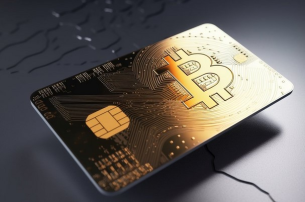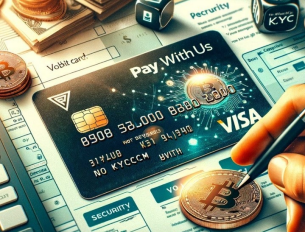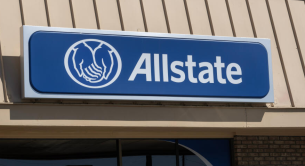In the evolving world of cryptocurrency, Bitcoin ATMs have become an important tool for enabling users to buy and sell Bitcoin and other cryptocurrencies in a fast and convenient manner. Bitcoin ATMs provide an accessible bridge between the digital and traditional financial worlds, enabling individuals to engage with crypto assets directly, without needing to use exchanges or online platforms.
If you're curious about how Bitcoin ATMs work and how you can use them to buy or sell Bitcoin, this comprehensive guide will take you through the basics, the step-by-step process of using these machines, and an explanation of their underlying technology.
What is a Bitcoin ATM?
A Bitcoin ATM (Automated Teller Machine) is a machine that allows users to buy or sell Bitcoin and sometimes other cryptocurrencies in exchange for traditional fiat currencies such as dollars, euros, or pounds. These machines function similarly to traditional bank ATMs but instead of dispensing cash, they enable transactions involving digital currencies.
Bitcoin ATMs can typically be categorized into two types:
-
One-way machines: These machines allow users to buy Bitcoin with fiat currency but not sell it.
-
Two-way machines: These machines enable both the buying and selling of Bitcoin. Users can both purchase cryptocurrency and exchange their Bitcoin for cash.
Bitcoin ATMs are often located in public places such as shopping malls, convenience stores, and airports, making them a convenient option for anyone looking to purchase cryptocurrency on the go.
How Does a Bitcoin ATM Work?
Bitcoin ATMs are powered by specialized software that interacts with the Bitcoin network and cryptocurrency wallets to facilitate the transaction. The basic functionality of a Bitcoin ATM typically includes:
-
Identity Verification: Many Bitcoin ATMs require users to verify their identity before completing a transaction. This is typically done by scanning an ID, taking a selfie, or entering personal information. The level of verification depends on the machine and the transaction amount. For smaller transactions, this might not be necessary, but for larger amounts, Know-Your-Customer (KYC) regulations may apply.
-
Fiat-to-Crypto Transaction: When purchasing Bitcoin, you deposit fiat currency (such as paper money) into the machine. The ATM will then provide you with the equivalent amount of Bitcoin at the current exchange rate, transferring the funds to your digital wallet.
-
Crypto-to-Fiat Transaction: If the machine supports two-way functionality, you can also sell Bitcoin at these ATMs. In this case, you will scan the QR code of your Bitcoin wallet and send the desired amount of Bitcoin to the ATM’s address. Once the transaction is confirmed, you will receive the corresponding fiat currency in cash.
-
Transaction Fees: Bitcoin ATMs usually charge a fee for their services. These fees can vary depending on the machine and the location but typically range from 5% to 10% for buying crypto and can also apply to selling Bitcoin. The fee often depends on the current market conditions and how much liquidity is available at the ATM.
-
Transaction Confirmation: When you send Bitcoin to a Bitcoin ATM (in a sell transaction), the machine waits for a certain number of confirmations from the Bitcoin network before dispensing cash. This is a security feature to ensure that the transaction has been properly validated. Confirmation times can vary, but typically, it takes between 10 minutes and an hour for the network to confirm the transaction.
How to Use a Bitcoin ATM
Using a Bitcoin ATM is a relatively simple process, especially for those who have used a traditional bank ATM before. Below is a step-by-step guide on how to use a Bitcoin ATM, whether you’re buying or selling cryptocurrency.
How to Buy Bitcoin with a Bitcoin ATM
-
Find a Bitcoin ATM: The first step is to locate a Bitcoin ATM. You can find Bitcoin ATMs using online tools like CoinATMRadar, which provides a map of Bitcoin ATM locations worldwide. Most Bitcoin ATMs are located in urban centers, so check your local area for available machines.
-
Verify Your Identity: Depending on the machine and the amount you intend to purchase, you may be required to verify your identity. This might involve scanning your driver’s license, passport, or other forms of identification. Some machines only require phone numbers for smaller purchases, while others require more comprehensive identity verification for larger amounts.
-
Select the Buy Option: Once you're at the machine, press the "Buy Bitcoin" button. The ATM may ask you to select the cryptocurrency you wish to purchase (e.g., Bitcoin, Ethereum, Litecoin, etc.).
-
Input the Amount: Enter the amount of Bitcoin you want to buy. You can typically specify this in terms of either the fiat amount (how much money you want to spend) or the cryptocurrency amount (how much Bitcoin you want to receive). The ATM will calculate the equivalent value.
-
Send Funds: Insert your fiat currency (such as cash) into the machine. The ATM will process the deposit and display the current exchange rate. Note that Bitcoin ATMs may charge higher fees than traditional exchanges, so it’s important to consider this when deciding how much to buy.
-
Provide Your Wallet Address: Bitcoin ATMs usually require you to provide a wallet address where the Bitcoin will be sent. You can either scan your wallet’s QR code from your mobile phone or enter the wallet address manually. Make sure you input the correct address to avoid losing your funds.
-
Confirm the Transaction: After entering the wallet address, the machine will confirm the transaction details. Once you verify everything, you will need to approve the transaction. The ATM will then transfer the Bitcoin to your wallet, and you will receive a receipt as proof of the transaction.
-
Receive Bitcoin: After the transaction is confirmed, your Bitcoin will be sent to your wallet, and the transaction will be complete. The time it takes to receive Bitcoin can vary depending on network congestion, but typically it’s fast if the network is not congested.
How to Sell Bitcoin with a Bitcoin ATM
-
Select the Sell Option: At the Bitcoin ATM, select the “Sell Bitcoin” option. The machine will ask you to input the amount of Bitcoin you want to sell or the fiat amount you would like to receive.
-
Scan Your Wallet Address: To sell Bitcoin, you’ll need to provide your wallet address where you want to send your Bitcoin. Open your wallet on your mobile device and scan the QR code displayed on the ATM screen. This ensures that the correct address is used.
-
Send Bitcoin to the ATM: Once you’ve scanned your wallet’s QR code, the machine will display the amount of Bitcoin you need to send. Send the specified amount from your wallet to the Bitcoin ATM address. Wait for the network to confirm the transaction. This can take several minutes to an hour.
-
Receive Cash: After the Bitcoin transaction is confirmed, the ATM will dispense cash corresponding to the amount you sold. The amount of cash you receive depends on the current market rate and the amount of Bitcoin you sent.
-
Get a Receipt: Always ask for a receipt of the transaction, especially if you are making a large withdrawal or if the machine does not provide a printed receipt automatically. The receipt will contain important transaction details, including your wallet address and the amount of Bitcoin you sold.
Advantages of Using a Bitcoin ATM
-
Ease of Use: Bitcoin ATMs are relatively easy to use, especially for people who are new to cryptocurrency. They provide a user-friendly interface that allows you to interact with the crypto world using cash.
-
Privacy: Bitcoin ATMs are often a more private way to buy or sell crypto compared to exchanges, as they don’t necessarily require you to create an account or provide extensive personal information (though this depends on the transaction amount).
-
Speed: Transactions at Bitcoin ATMs are typically processed quickly, and you can receive your Bitcoin or cash immediately (once the necessary confirmations are complete).
-
Global Access: Bitcoin ATMs are found in various locations around the world, making it easy to access Bitcoin in countries or areas where traditional financial institutions might not be as accessible.
Disadvantages of Bitcoin ATMs
-
High Fees: Bitcoin ATMs often charge higher fees compared to online exchanges, which can range between 5% and 10%. Always be mindful of the cost before using one.
-
Limited Availability: While the number of Bitcoin ATMs is growing, they are not yet as widespread as traditional ATMs. You may have to search for a nearby machine, especially if you’re located in a less urbanized area.
-
Transaction Limits: Some Bitcoin ATMs impose transaction limits, either daily or per transaction. These limits can vary depending on the machine and the type of transaction (buying or selling).
-
Regulatory Compliance: Bitcoin ATMs are often subject to local regulations, and in some areas, these regulations may require extensive identity verification or impose restrictions on certain types of transactions.
Conclusion: Are Bitcoin ATMs a Good Option for Crypto Transactions?
Bitcoin ATMs provide a convenient way for people to buy and sell cryptocurrencies in person. Whether you're a seasoned crypto investor or a beginner looking to explore digital currencies, these machines offer a simple way to engage with the crypto world. However, it’s important to keep in mind the associated fees and transaction limits. As Bitcoin and other cryptocurrencies continue to gain mainstream adoption, the availability and functionality of Bitcoin ATMs are likely to expand, making them a valuable tool for crypto enthusiasts globally.





















